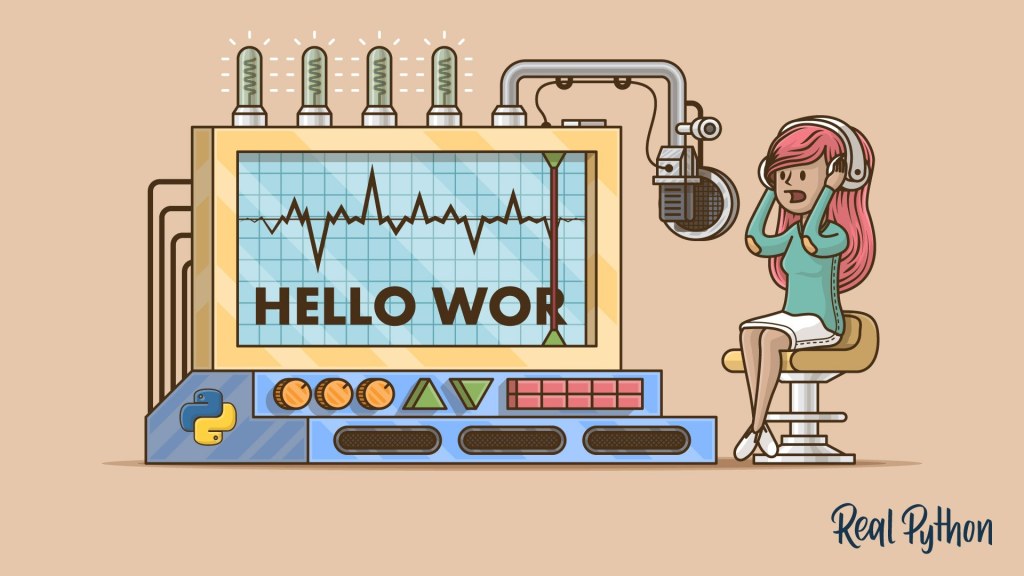Master Voice Coding Techniques: Unleash Your Coding Power With These Powerful Tips!
Voice Coding Techniques: Unlocking a New Era of Programming
Greetings, dear Readers! In this article, we will explore the fascinating world of voice coding techniques, revolutionizing the way we write code. As technology continues to advance, developers are constantly seeking innovative ways to improve efficiency and productivity. Voice coding techniques emerge as a groundbreaking solution, allowing programmers to write code by simply speaking. Let’s delve into this exciting realm and discover how it can enhance our programming experience.
Introduction
Voice coding techniques, also known as voice programming or voice-controlled coding, refer to the practice of using speech recognition technology to write code. It enables developers to dictate code verbally, eliminating the need for traditional manual typing. By leveraging the power of natural language processing and machine learning algorithms, voice coding techniques streamline the programming process and offer numerous advantages.
2 Picture Gallery: Master Voice Coding Techniques: Unleash Your Coding Power With These Powerful Tips!


1️⃣ Improved Efficiency: Voice coding techniques significantly enhance programming speed, eliminating the time-consuming task of typing complex lines of code. With voice commands, developers can express their ideas more rapidly and fluidly, allowing for greater productivity and faster project completion.
2️⃣ Reduced Errors: Manual typing can lead to typographical errors, which can be time-consuming to identify and rectify. Voice coding techniques reduce the chances of such errors, as the code is directly transcribed from the spoken commands. This feature minimizes debugging time and ensures cleaner and error-free code.
3️⃣ Accessibility and Inclusivity: Voice coding techniques empower individuals with physical disabilities or conditions that hinder traditional typing. By eliminating the need for manual input, voice coding enables a more inclusive programming environment, allowing everyone to participate and contribute to the field of software development.

Image Source: realpython.com
4️⃣ Multitasking Capability: Voice coding techniques enable developers to perform multiple tasks simultaneously. With voice commands, programmers can write code while conducting research, attending meetings, or even taking a break. This multitasking capability enhances efficiency and enables a more flexible workflow.
5️⃣ Seamless Collaboration: Voice coding techniques facilitate seamless collaboration among programmers. By enabling real-time transcription of spoken commands, developers can easily share their code with colleagues, enhancing teamwork and promoting efficient code reviews.
6️⃣ Enhanced Focus and Ergonomics: Voice coding techniques reduce the strain on programmers’ wrists and fingers caused by hours of typing. By allowing developers to code through speech, it promotes better ergonomics and reduces the risk of repetitive strain injuries. Furthermore, it enables programmers to focus more on the logic and structure of their code, enhancing overall code quality.
What is Voice Coding?
Voice coding, also known as voice-programming or voice-controlled coding, is a method of writing code using speech recognition technology. This technique allows developers to verbally dictate their code instead of manually typing it. By leveraging natural language processing and machine learning algorithms, voice coding software can convert spoken commands into code, streamlining and accelerating the programming process.
Who Can Benefit from Voice Coding Techniques?
Voice coding techniques can benefit a wide range of developers, regardless of their level of expertise. Here are some key groups:

Image Source: wikimedia.org
1️⃣ Programmers with Physical Disabilities: Voice coding provides a viable solution for programmers with physical disabilities that prevent or hinder traditional typing. By using speech recognition technology, these individuals can actively engage in programming, breaking down barriers and promoting inclusivity in the field.
2️⃣ Developers Seeking Productivity Boost: Voice coding techniques significantly enhance programming speed, enabling developers to write code more quickly and efficiently. It is particularly beneficial for programmers working on large-scale projects or tight deadlines, allowing them to accomplish more in less time.
3️⃣ Individuals with Typing-related Strain Injuries: Extended periods of typing can lead to repetitive strain injuries, such as carpal tunnel syndrome. Voice coding techniques provide an alternative method for developers experiencing discomfort or pain while typing, allowing them to continue coding without exacerbating their condition.
4️⃣ Multitaskers: Voice coding enables developers to multitask effectively. By using speech recognition technology, programmers can code while conducting research, attending meetings, or performing other tasks, enhancing overall productivity and time management.
5️⃣ Teams and Collaborative Projects: Voice coding techniques facilitate seamless collaboration among team members. By allowing developers to dictate their code, it becomes easier to share and review code, enhancing teamwork and enabling more efficient code development processes.
When Can Voice Coding Techniques Be Used?
Voice coding techniques can be used in various programming scenarios, including:
1️⃣ Personal Projects: Whether you are working on a personal coding project or experimenting with new programming techniques, voice coding can be a valuable tool to enhance your productivity and streamline your workflow.
2️⃣ Professional Development: Voice coding techniques are increasingly being adopted in professional software development environments. From startups to large enterprises, many organizations are embracing voice coding to optimize their programming processes and improve overall efficiency.
3️⃣ Collaborative Projects: Voice coding techniques can greatly benefit collaborative projects where multiple developers are working together. By using voice commands, programmers can easily exchange and review code, promoting effective collaboration and enhancing project outcomes.
4️⃣ Hackathons and Coding Competitions: In fast-paced coding events like hackathons and coding competitions, voice coding techniques can provide a competitive edge. The ability to express ideas and code rapidly through speech allows participants to develop innovative solutions efficiently within tight time constraints.
Where Can Voice Coding Techniques Be Implemented?
Voice coding techniques can be implemented in various coding environments and programming languages, including:
1️⃣ Integrated Development Environments (IDEs): Many popular IDEs are now integrating voice coding capabilities, enabling developers to write code using speech recognition technology seamlessly. IDEs such as Visual Studio Code, PyCharm, and Atom offer voice coding plugins and extensions.
2️⃣ Text Editors: Voice coding techniques are not limited to IDEs and can also be implemented in text editors. Developers can use voice coding plugins or external voice recognition software to write code in text editors like Sublime Text, Notepad++, or Vim.
3️⃣ Voice Coding-Specific Tools: Several tools are specifically designed to facilitate voice coding. These tools often offer advanced features tailored to voice programming, including voice commands for common programming tasks and support for different programming languages.
4️⃣ Web-Based Coding Environments: Some online coding platforms and web-based IDEs have started integrating voice coding capabilities. Developers can take advantage of these platforms to write code using only their voice, eliminating the need for local installations.
Why Should You Consider Voice Coding Techniques?
Voice coding techniques offer numerous advantages that can revolutionize your programming experience:
1️⃣ Increased Efficiency: Voice coding allows you to write code significantly faster than manual typing, resulting in enhanced productivity and shorter development cycles.
2️⃣ Improved Accuracy: By directly transcribing spoken commands, voice coding techniques reduce the chances of typographical errors, leading to cleaner and error-free code.
3️⃣ Accessibility and Inclusivity: Voice coding empowers individuals with physical disabilities to actively participate in programming, fostering inclusivity within the developer community.
4️⃣ Enhanced Collaboration: Real-time transcription of spoken commands enables seamless collaboration among team members, fostering effective code sharing and review processes.
5️⃣ Ergonomics and Health Benefits: By eliminating repetitive strain from manual typing, voice coding techniques promote better ergonomics and reduce the risk of related health issues.
How to Start Using Voice Coding Techniques?
If you are interested in exploring voice coding techniques, follow these steps to get started:
1️⃣ Choose a Suitable Voice Coding Tool: Research and select a voice coding software or plugin that is compatible with your preferred programming environment and offers the functionalities you require.
2️⃣ Configure and Train the Software: Configure the voice coding software according to your preferences and train it to recognize your voice accurately. Take the time to familiarize yourself with the available voice commands and shortcuts.
3️⃣ Practice and Refine Your Technique: Like any new skill, voice coding requires practice. Start with small code snippets and gradually increase the complexity. Refine your technique by experimenting with different voice commands and observing their impact on your coding speed and accuracy.
4️⃣ Seek Community Support: Join online forums, communities, or social media groups dedicated to voice coding techniques. Engage with fellow developers, exchange tips and tricks, and learn from their experiences.
5️⃣ Embrace Continuous Learning: Voice coding techniques are evolving rapidly. Stay up-to-date with the latest advancements and updates in voice coding software to make the most of its capabilities.
FAQs
1. Can voice coding techniques be used in all programming languages?
Yes, voice coding techniques can be implemented in various programming languages. However, the availability and compatibility of voice coding tools may vary depending on the programming language and coding environment you are using.
2. Will voice coding replace traditional coding methods?
Voice coding techniques offer an alternative method for writing code, but they are unlikely to replace traditional coding methods completely. They provide additional flexibility and convenience, but developers may still prefer manual typing for certain tasks.
3. Is voice coding suitable for all programming tasks?
Voice coding techniques are suitable for a wide range of programming tasks. However, certain intricacies or complex coding scenarios may require manual typing or a combination of voice coding and traditional coding methods.
4. Are there any privacy concerns with voice coding techniques?
Using voice coding techniques involves transmitting spoken commands to the voice coding software or plugin. It is essential to choose reputable and secure software to ensure the privacy and confidentiality of your code.
5. Are voice coding techniques resource-intensive?
Voice coding techniques require speech recognition algorithms and processing power. While they may consume some system resources, they are designed to run efficiently on modern hardware without significantly impacting overall performance.
Conclusion
In conclusion, voice coding techniques offer a revolutionary approach to programming that enhances efficiency, accessibility, and collaboration. By utilizing speech recognition technology, developers can write code faster, reduce errors, and promote inclusivity within the developer community. While voice coding techniques may not replace traditional coding methods entirely, they provide a valuable addition to a programmer’s toolkit. So why not explore this exciting realm and unlock a new era of programming with voice coding techniques?
Friends, it’s time to seize this opportunity and embrace the future of coding. Start integrating voice coding techniques into your programming workflow and experience the countless benefits it brings. Happy coding!
Disclaimer: The information provided in this article is for educational purposes only. The use of voice coding techniques and the selection of specific tools and software mentioned are subject to individual preferences and requirements. Please ensure that you evaluate and choose the appropriate tools based on your specific needs and conduct the necessary research and review before making any decisions.
This post topic: Programming


